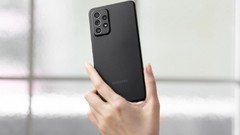Cross-battery sharing from Android to iPhone becomes reality!
A significant turning point is unfolding in the rivalry between the two pillars of the smartphone world, Android and iOS.

With the introduction of the iPhone 15 series, the divide between Android and iPhone users has somewhat diminished. This is primarily due to Apple's decision to integrate USB-C into their newest lineup. This shift enables both types of smartphones to exchange battery power, a feature previously exclusive to Android devices since 2015. Even though some may regard this as a minor advancement, it signifies a potential series of collaborative features on the horizon.
Previously, iPhones utilized USB-C to Lightning cables. This allowed Android phones to transfer power to iPhones, but not the other way around. The iPhone 15 series, however, has redefined this dynamic. Notably, a recent experiment demonstrated that an iPhone 15 could effortlessly transfer battery power to a Google Pixel Fold using just a USB-C cable.
Cross-battery sharing from Android to iPhone becomes reality!
But why is this significant? Essentially, it amplifies the versatility of owning a smartphone. Now, your device serves not just as a communication tool but also as a makeshift battery bank. This capability is especially handy when you need to recharge other devices, be it another smartphone or accessories like smartwatches. Some Android phones even provide a direct “charge connected device” function, simplifying the entire process.
Though not an everyday necessity, the feature proves invaluable in situations where a friend's phone is on the verge of dying, and there's no power source in sight. It's also a handy solution for recharging smaller gadgets on the move. Capitalizing on this development, companies such as Nomad are introducing compact USB-C cables on keychains, streamlining the process of power-sharing between gadgets.
In the larger scheme of things, this move represents more than just convenience. It marks a conscious effort to unify the mobile technology landscape. By enabling something as fundamental as battery power sharing between Android and iPhone devices, the stage is set for further cross-platform cooperation in the years to come.
 Mysterious Xiaomi wearable receives certification, launch seems imminentHardware
Mysterious Xiaomi wearable receives certification, launch seems imminentHardware





